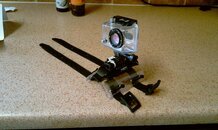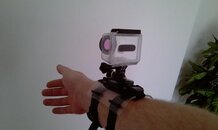jimmy71
Contributor
- Messages
- 407
- Reaction score
- 27
- # of dives
- 200 - 499
Bill, I just spent a couple hours reviewing what post are left after the mods cleaned it.........
First a simple question. How and where is your camera mounted? Seems to be high on right arm. I tired mounting mine on the mask strap but you always miss a lot of action. I find it annoying. Yours gave a much better understanding of the situation.
I want to commend you on your willingness to put yourself to the attacks that happen on a board like this when someone presents a situation where they made mistakes and hope to teach/learn from others. Handling these discussions is not a strong point of the boards. If you did not write a book or invent diving, then your actions are ALWAYS wrong and a sign you "should not be diving." It is rubbish and has no place here. I am unsure if it is because people do not want to believe it can happen to them or that they are unprepared. We have all learned lessons by different means. If you are lucky you learned them through education and practice. If you are unlucky you learned them the hard way. You learned a lot of things that you will not soon forget. Congrats.
I also want to commend you on keeping your cool. All the books and indecent analysis you read all have a common theme, panic. A simple problem or even multiple problems that are solvable become unsolvable once a diver panics. Panic kills. You can teach a diver different techniques and lessons, it is very hard to teach away panic. It is unacceptable underwater. You recognized your situation and had methods and a plan to address it. Regardless of your choices, you had a realistic plan that you continued to reevaluate as new circumstances arose. Your goal was to reach the surface safe and had to remap and reassess how to do that at various parts of the dive. I think you did a good job of doing so exhibited by the fact you made it back to the surface safely. Sure it could have been done prettier but in the end it is the same.
I love how people fault you for performing a safety stop and also fault you for not realizing the large number of options available to you as far as air and alt air sources at said stop. At your stop in your conditions, you had plenty of air and air sources to finish a very long safety stop if needed. Why not finish it? This was not open ocean water with bad chop, it does not matter if they surfaced with zero air. I can promise you that they are probably at a remote location with little support and no O2 to handle a diver with DCS. This could have a repeat dive or other. I see no harm with finishing a safety stop in this situation. There was no added risk in doing so. He assessed risks vs benefits, saw the benefits, and acted as such. Once his evaluation changed, his actions did as well. Those are the actions of a thoughtful diver. One who does not think dumps his weight sand corks to the surface.
i would to say more but i got to go.
First a simple question. How and where is your camera mounted? Seems to be high on right arm. I tired mounting mine on the mask strap but you always miss a lot of action. I find it annoying. Yours gave a much better understanding of the situation.
I want to commend you on your willingness to put yourself to the attacks that happen on a board like this when someone presents a situation where they made mistakes and hope to teach/learn from others. Handling these discussions is not a strong point of the boards. If you did not write a book or invent diving, then your actions are ALWAYS wrong and a sign you "should not be diving." It is rubbish and has no place here. I am unsure if it is because people do not want to believe it can happen to them or that they are unprepared. We have all learned lessons by different means. If you are lucky you learned them through education and practice. If you are unlucky you learned them the hard way. You learned a lot of things that you will not soon forget. Congrats.
I also want to commend you on keeping your cool. All the books and indecent analysis you read all have a common theme, panic. A simple problem or even multiple problems that are solvable become unsolvable once a diver panics. Panic kills. You can teach a diver different techniques and lessons, it is very hard to teach away panic. It is unacceptable underwater. You recognized your situation and had methods and a plan to address it. Regardless of your choices, you had a realistic plan that you continued to reevaluate as new circumstances arose. Your goal was to reach the surface safe and had to remap and reassess how to do that at various parts of the dive. I think you did a good job of doing so exhibited by the fact you made it back to the surface safely. Sure it could have been done prettier but in the end it is the same.
I love how people fault you for performing a safety stop and also fault you for not realizing the large number of options available to you as far as air and alt air sources at said stop. At your stop in your conditions, you had plenty of air and air sources to finish a very long safety stop if needed. Why not finish it? This was not open ocean water with bad chop, it does not matter if they surfaced with zero air. I can promise you that they are probably at a remote location with little support and no O2 to handle a diver with DCS. This could have a repeat dive or other. I see no harm with finishing a safety stop in this situation. There was no added risk in doing so. He assessed risks vs benefits, saw the benefits, and acted as such. Once his evaluation changed, his actions did as well. Those are the actions of a thoughtful diver. One who does not think dumps his weight sand corks to the surface.
i would to say more but i got to go.





